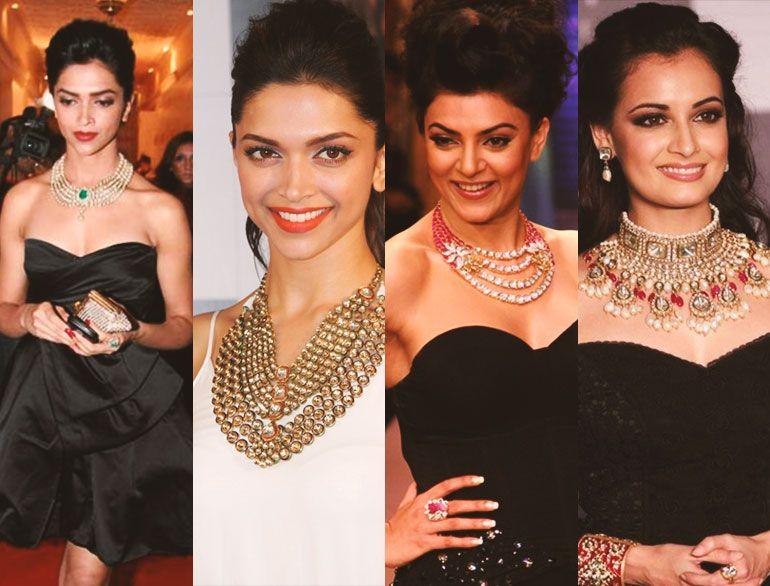Some of the most exquisite and elaborate jewellery may be found in India. For generations, Indian jewellery has been a vital component of the nation's culture and legacy. Women all throughout the world wear Indian jewellery today. We shall examine the background and traditions of Indian jewellery in this blog article.
Indian jewellery has a history that predates the nation itself. The Indus Valley Civilization, which existed in India 3,000 years ago, is where the country's earliest jewellery artefacts were discovered. The Vedic era also saw the wearing of jewellery. At this period, precious metals like gold, silver, and platinum were used to create jewellery.
The Mughals had a big influence on Indian jewellery during their long reign of terror. The beauty and complexity of jewels increased throughout the Mughal era. New styles and materials, such diamonds, pearls, and emeralds, were introduced by the Mughals. Indian jewellery is more well-liked than ever right now. The exquisite craftsmanship and stunning designs of Indian jewellers appeal to women all over the world. Indian jewellery is the ideal way to give any ensemble a dash of glitz and refinement.
1.Indian jewellery's significance
- Indian culture is fundamentally reliant on jewellery. It is worn for social and religious as well as aesthetic purposes. We'll look at the significance of Indian jewellery and how it's used to many facets of daily life.
- Jewelery is more than simply a fashion statement for many Indians. It allows them to express their culture and individuality. Jewelry is frequently seen as a status and wealth symbol. Jewelry is even regarded as money in certain civilizations. For instance, gold is prized as a commodity in India. Gold is frequently used as security for loans or to purchase other goods.
- Jewelry is also said to be a means of warding off bad spirits. There is a widespread belief throughout many cultures that specific jewels may serve as protection from danger. For instance, ladies frequently wear bangles in India. They are said to be shielded from bad spirits by these bracelets.
- Religious rituals also employ jewellery. For instance, jewellery is frequently worn during devotion or puja in Hinduism. Hindus frequently wear jewels at weddings and other significant occasions in their lives.
- Indian culture places a high value on jewellery. It is worn for social and religious as well as aesthetic purposes. We looked at the significance of Indian jewellery and how it is used in numerous facets of life in this blog article.
2.Indian jewellery styles
Indian jewellery has a certain grace and delicacy about it. Indian bridal jewelry, whether it is made of gold or diamonds, makes every lady feel like a queen. Among the various forms of jewelery are:
- nostril rings
The nose ring is among the most well-liked items of Indian jewellery. Nose rings, also known as nath, are frequently fashioned of gold, silver, or copper. Usually, jewels like diamonds, pearls, or gemstones are used to embellish them. In India, nose rings are worn by females of all ages and religions.
Since the left side of the nose is seen as being more hopeful, nose rings are typically worn on this side. Hinduism associates the left side of the body with the heart, hence wearing a nose ring here is said to be beneficial for the heart's wellbeing. For Hindu women, nose rings are also a sign of marital status.
- Earrings
Another well-liked category of Indian jewellery is artificial earrings. Typically composed of gold, silver, or copper, they frequently feature diamonds, pearls, or other precious stones in their decorations. In India, ladies of all ages and religions don earrings.
Both sides of the head are covered in earrings, but the left ear is thought to be luckier. Due to Hinduism's association of the left side of the body with the heart, Hindu women often wear earrings as a sign of their marital status.
- Bracelets
Another well-liked category of Indian jewellery is bracelets. Typically composed of gold, silver, or copper, they frequently feature diamonds, pearls, or other precious stones in their decorations. In India, ladies of all ages and religions wear bracelets online.
Although both wrists are adorned with bracelets, the left wrist is said to be more lucky. Wearing a bracelet on this location is seen appropriate for the health of the heart since the left side of the body is related with the heart in Hinduism. For Hindu women, bracelets are often viewed as a sign of marital status.
- Necklaces
Another well-liked kind of Indian jewellery is the necklace. Typically composed of gold, silver, or copper, they frequently feature diamonds, pearls, or other precious stones in their decorations. In India, ladies of all ages and religions don ethnic necklaces.
When wearing a necklace, the pendant often rests on the wearer's chest. The necklace is regarded as a protective sign in Hinduism since it is believed to shield its bearer from evil. For Hindu women, necklaces are often viewed as a mark of marital status.
Regarding the essay's central premise, a variety of different topics can be investigated. For instance, the principal topic might be addressed in relation to the issue of family relations. The major notion may be examined as the theme of mental wellness. Finally, relationships might be investigated as the major subject.
